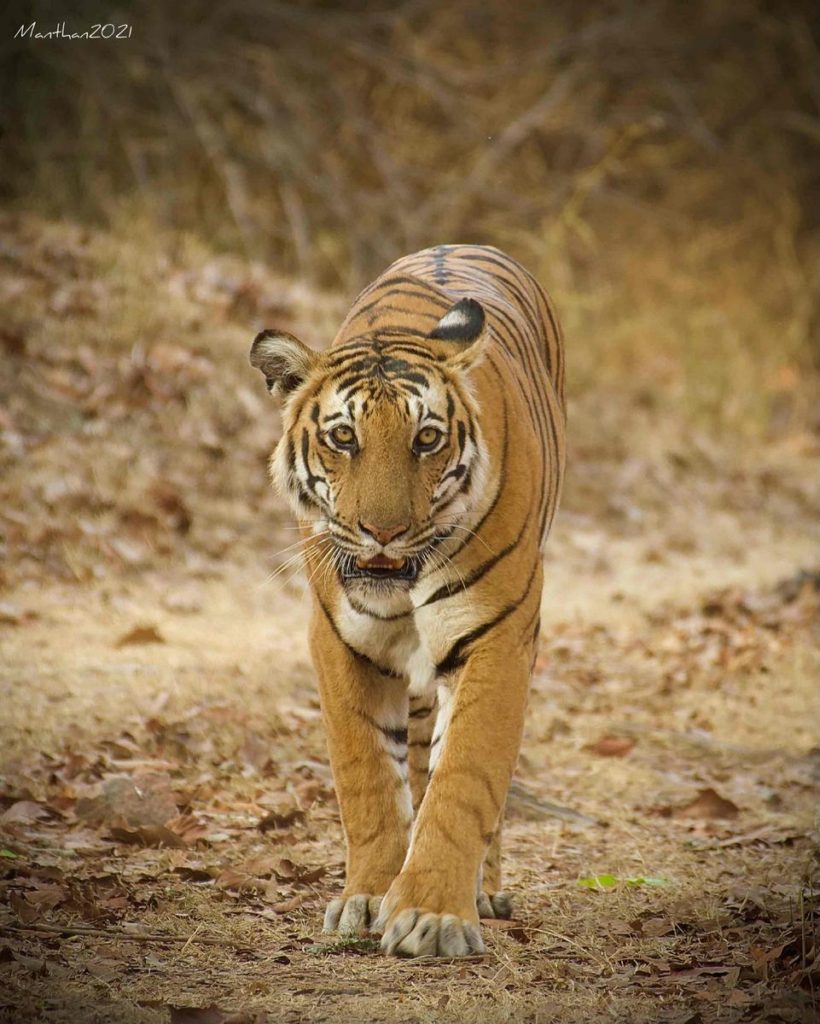Kabini’s tiger heritage is no secret to those in the field of wildlife and wildlife photographers who frequently travel to this marvelous land for sighting opportunities. Right from the times of the Mysore Wodeyars, this massive forest landscape has been a haven for the feline and continues to have one of the highest densities of tigers in all of India with 124 individuals in the Kabini range. Coupled with the neighboring Bandipur and Sathyamangalam range, the count is a staggering 724 individuals.
Here too, there is plenty of interesting history that surrounds the tiger. Kabini and Nagarhole are the 27th Project Tiger-based tiger reserve in the country and we are proud to have our resort in Kabini within such close proximity. With all this in mind, here’s an account of the tiger and its place in the Kabini ecosystem.
About The Tiger
So what do we actually know about our royal feline? There are some facts about the tiger that you will find interesting and recollect, the next time you visit our resort in Kabini. Tigers belong to the Panthera genus of big cats. This genus is the only species of wild cat that can roar loudly. Our kitties at home cannot, but these big cats have this ability as an adaptation that helps in territorial conflicts and is also useful in attracting mates. On the contrary, big cats cannot purr while our domesticated cats most certainly can!

The journey of a tiger is actually a tricky one. Right from birth, cubs are brought into the world as frail and blind balls of fluff. Even though cubs can open their eyes within 10 days, they remain helpless and often fall easy prey to other animals like leopards or even male tigers. The onus, therefore, is on the mother to be a guardian for her litter for the next few weeks. There are also risks when the mother goes out to hunt; the cubs then become easy picking for even smaller predators like leopards and dholes.
It takes a few weeks for the little ones to emerge out of their sanctuary. The mother initially does not let them out of her sight but soon takes them hunting with her. Hunting is the most crucial skill a cub must learn from its mother. Even here, a clumsy beginner’s mistake on the cub’s part means no food for the whole family! Female tigers, in fact, require over 70sqkm of hunting grounds/territory for both her and their litter. In fact, we have also had the rare report of a tiger sighting all the way across the backwaters at our resort in Kabini!
Eventually, the tiger cubs become graceful young sub-adults. And within 2 years, they part ways with their mother to start a journey on their own as fully grown adults. They will begin to seek territory, food, and companionship of their own. And the cycle continues, ensuring that the lineage of tigers in Kabini carries on!
Tigers Of Kabini:
Here is a small list of the more prominent tigers of Kabini that have made it to mainstream media!
- Tiger Tank Female And Her Cubs:

One of the most popular females of Kabini had claimed for herself one of the many “bunds” that are found in Nagarhole as a source of water for the fauna. Her lineage and history have been tracked since 2015. Her cubs eventually went on to become the Tiger Tank Male and Female of Nagarhole and are constantly sighted on many safaris in Kabini. Guests staying at our resort in Kabini have forever photographed these iconic cubs. The mother, unfortunately, passed away in 2018 but her progeny continues to rule over the tank!
2. The Backwater female:

Said to be the most dominant female of Kabini, the backwater female hails from a litter of cubs born in 2014 or 2015. She recently had her own litter of cubs in 2020 whose father in fact is said to be the Tank Male that we spoke about above!
So, would you like to meet the royal felines on your next visit to our resort in Kabini? Let our naturalists know and we’d be happy to organize a safari in Kabini with their expertise to keep you company.



